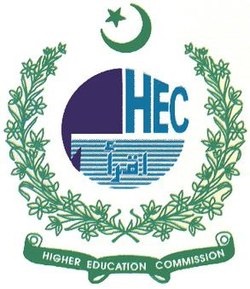Unlocking the Secrets of Economic Growth: Understanding the Transmission Mechanism of the Monetary Policy
DOI:
https://doi.org/10.61506/01.00159Keywords:
Monetary policy, Economic growth, Macroeconomic indicatorsAbstract
This research investigates how changes in monetary policy impact Pakistan's economic growth. trajectory, focusing on macroeconomic indicators and monetary policy's role in long-term economic objectives. The research uses a quantitative approach and econometric methods to evaluate data from 1991 to 2020. Results show that certain variables, like interest rates, capital formation, labor force, and current account balance, positively impact economic growth, while others, like exchange rates, net trade, money supply, and private sector access to domestic credit, have negative impacts. These statistically significant correlations show how monetary policy variables and economic outcomes interact in complex ways.
References
Agalega, E., & Antwi, S. (2013). The impact of macroeconomic variables on gross domestic product: empirical evidence from Ghana. International Business Research, 6(5), 108-116. DOI: https://doi.org/10.5539/ibr.v6n5p108
Amarasekara, C. (2008). The Impact of Monetary Policy on Economic Growth and Inflation in Sri Lanka. Central Bank of Sri Lanka Staff Studies, 38 (1& 2), 1-44. DOI: https://doi.org/10.4038/ss.v38i1.1220
Anwar, A., Mohsin, A. Q., & Saboor, A. (2016). Impact of Monetary Policy on Economic Growth in Pakistan: Evaluation and Analysis. Pakistan Journal of Social Sciences, 36(1), 131-140.
Barth, R. (2002). The Framework of Monetary Policy. In Macroeconomic Management. Washington, D.C: International Monetary Fund. 139-167.
Bernanke, B. S. (2017). Monetary policy in a new era. Evolution or revolution?: Rethinking Macroeconomic Policy After The Great Recession, 3-48. DOI: https://doi.org/10.7551/mitpress/11734.003.0004
Bordo, M. D. (2010). Monetary policy, history of. In Monetary Economics. London: Palgrave Macmillan. 205-215. DOI: https://doi.org/10.1057/9780230280854_25
Chang, W. Y., Chen, Y. A., & Chang, J. J. (2013). Growth and welfare effects of monetary policy with endogenous fertility. Journal of Macroeconomics, 35, 117-130. DOI: https://doi.org/10.1016/j.jmacro.2012.10.004
Dimitrijevic, B., & Lovre, I. (2013). Essay on monetary policy and economic growth. Journal of Central Banking Theory and Practice, 1(3), 111-138.
Fasanya, I. O., Onakoya, A. B., & Agboluaje, M. A. (2013). Does monetary policy influence economic growth in Nigeria?. Asian Economic and Financial Review, 3(5), 635-646.
Guenichi, H., & Khalfaoui, H. (2019). Monetary policy and economic growth: A global and sector perspective in Tunisia. Journal of Academic Finance, 10(2), 49-68. DOI: https://doi.org/10.59051/joaf.v10i2.321
Gul, H., Mughal, K., & Rahim, S. (2012). Linkage between monetary instruments and economic growth. Universal Journal of Management and Social Sciences, 2(5), 69-76.
Ihsan, I., & Anjum, S. (2013). Impact of money supply (M2) on GDP of Pakistan. Global Journal of Management and Business Research, 13(C6), 1-8.
Khan, A. H. (2021). Covid-19 and pakistan’s economy challenges and way forward. Strategic Thought, 3, 25-50.
Khin, A. A., Thambiah, S., Chau, W. H., Mohamadpour, B., & Balkrishan, G. (2014). Monetary policy and gross domestic product in Malaysia: An econometric investigation. Middle-East Journal of Scientific Research, 19(4), 602-609.
Kilinc, M., & Tunc, C. (2019). The asymmetric effects of monetary policy on economic activity in Turkey. Structural Change and Economic Dynamics, 51, 505-528. DOI: https://doi.org/10.1016/j.strueco.2019.03.006
Mallick, S. K., & Sousa, R. M. (2012). Real effects of monetary policy in large emerging economies. Macroeconomic Dynamics, 16(S2), 190-212. DOI: https://doi.org/10.1017/S1365100511000319
Mazhar, U., & Rehman, F. (2021). Monetary Policy in a Developing Country: A Case of Pakistan. Asian Journal of Management Cases, 18(2), 144-155. DOI: https://doi.org/10.1177/09728201211028719
Musa, I., Magaji, S., & Salisu, A. (2022). The Monetary Policy Shocks and Economic Growth: Evidence from SVAR Modelling. International Journal of Indonesian Business Review, 1(1), 1-11. DOI: https://doi.org/10.54099/ijibr.v1i1.170
Nwoko, N. M., Ihemeje, J. C., & Anumadu, E. (2016). The impact of monetary policy on the economic growth of Nigeria. African Research Review, 10(3), 192-206. DOI: https://doi.org/10.4314/afrrev.v10i3.13
Precious, C., & Makhetha-Kosi, P. (2014). Impact of monetary policy on economic growth: A case study of South Africa. Mediterranean journal of social sciences, 5(15), 76-84. DOI: https://doi.org/10.5901/mjss.2014.v5n15p76
Putriani, D. & Prastowo (2015). A Critical Review on Interest Rate as a Tool of Monetary Policy. Tazkia Islamic Finance and Business Review, 9(2), 150-165.
Qayyum, A. (2006). Money, inflation, and growth in Pakistan. The Pakistan development review, 45(2), 203-212. DOI: https://doi.org/10.30541/v45i2pp.203-212
Srithilat, K., Samatmanivong, T., Lienpaserth, V., Chanthavixay, P., Boundavong, V., & Douangty, V. (2022). The Effect of Monetary Policy on Economic Growth in Lao PDR. International Journal of Economics and Financial Issues, 12(1), 67-74. DOI: https://doi.org/10.32479/ijefi.10557
Twinoburyo, E. N., & Odhiambo, N. M. (2018). Monetary policy and economic growth: A review of international literature. Journal of Central Banking Theory and Practice, 7(2), 123-137. DOI: https://doi.org/10.2478/jcbtp-2018-0015
Waliullah, W., & Rabbi, F. (2011). Effectiveness of monetary policy in Pakistan: Empirical evidences based on boundtest approach. International Journal of Business and Social Science, 2(1), 190-199.
Zakir, N., & Malik, W. S. (2013). Are the effects of monetary policy on output asymmetric in Pakistan?. Economic Modelling, 32, 1-9. DOI: https://doi.org/10.1016/j.econmod.2013.01.037


